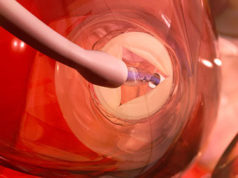
A new study, published in Catheterization and Cardiovascular Interventions, has not found a significant difference in outcomes between a specifically-designed transcatheter paravalvular leak closure device (Occultech PLD, Occultech) and other transcatheter closure devices. However, authors Aydin Yildirim (Cardiology Department, Mehmet Akif Ersoy Thoracic and Cardiovascular Surgery Training and Research Hospital, Istanbul, Turkey) and others claim that the benefit of the specific device will be seen in the long term.
Yildirim et al report that “a multitude of devices” have been used to percutaneously manage paravalvular leak after valve replacement surgery, but note that “the devices that are currently employed are being utilised off-label”. They add that these devices are associated with a high incidence of residual shunt. “Theoretically, having a device specifically designed to close paravalvular leak may improve results and outcomes,” the authors comment. Therefore, the aim of their study was to compare the use of the specifically-designed Occultech PLD system with the use of the off-label devices for the management of paravalvular leak.
Of 52 patients with haemodynamically significant paravalvular leak who underwent transcatheter paravalvular leak closure between 2012 and 2015 at two centres, 32 underwent closure with an off-label device (including 17 with Vascular Plug 3, St Jude Medical) and 20 underwent closure with the Occultech device. The primary endpoints were any events occurring during the procedure or with the subsequent 24 hours (eg. procedure-related death) and secondary endpoints were outcomes (such as all-cause death) at the follow-up point (six months).
The rate of procedural success was 100% in the Occultech group (29 of 29 leaks) compared with 92% in the off-label group (39 of 42). In this latter group, Yildirim et al explain, there were three procedural failures because of an inability to cross the defect. They comment: “Primary endpoints were not statistically different between the two groups. However, though more secondary events were in the off-label group, they did not reach statistically significance (8 vs. 1; p=0.064).”
The authors comment that their results indicate that type of closure device “seems to have little impact on short-term outcomes”, which mean that their hypothesis that a specific closure device would improve outcomes was not proven.
However, they add: “Taking into account the limited long-term clinical success with the use of off-label devices, our expectation is that the long-term results will prove in favour of the specifically-designed Occultech device.”
Yildirim et al conclude that the device with “its procedural success rate and encouraging outcome results” seems to satisfy the expectations of a new paravalvular leak closure device and note that “of course” the need for further studies is “undeniable”.










